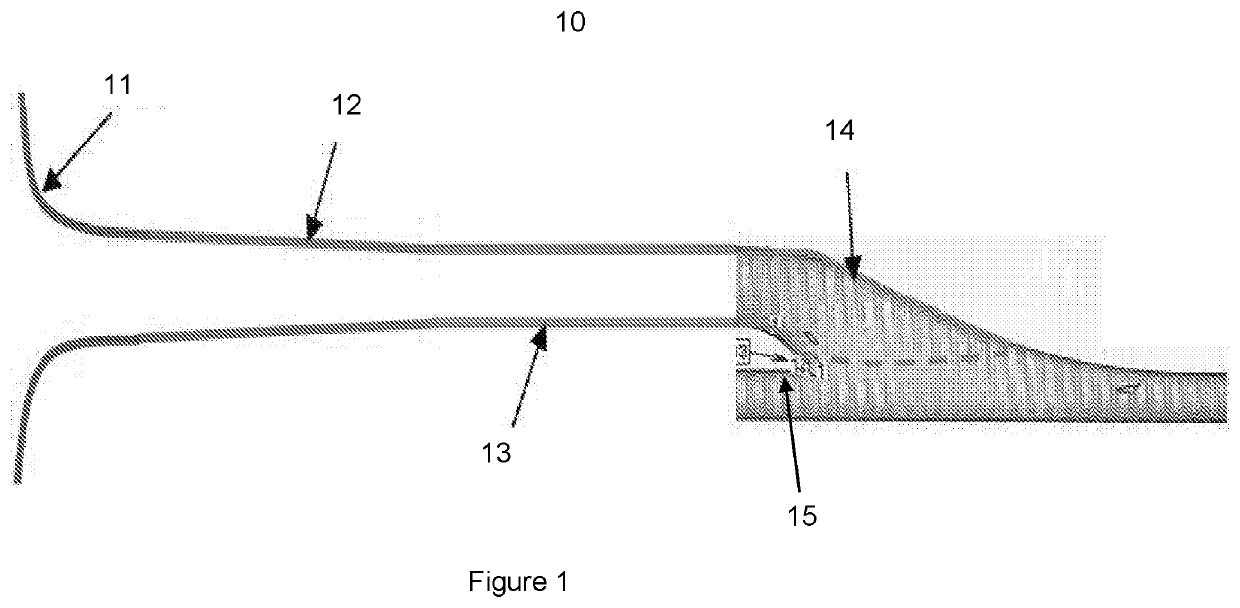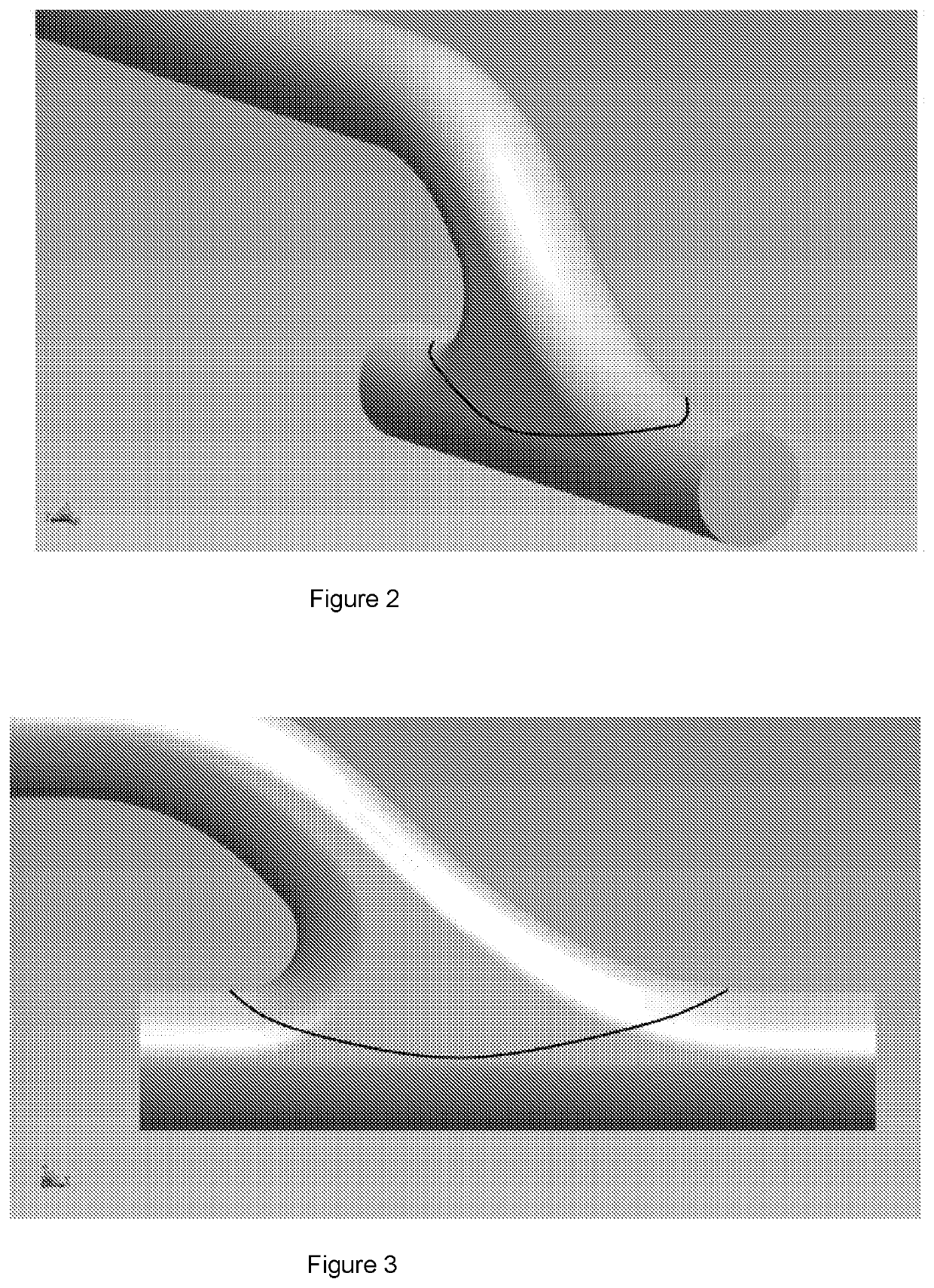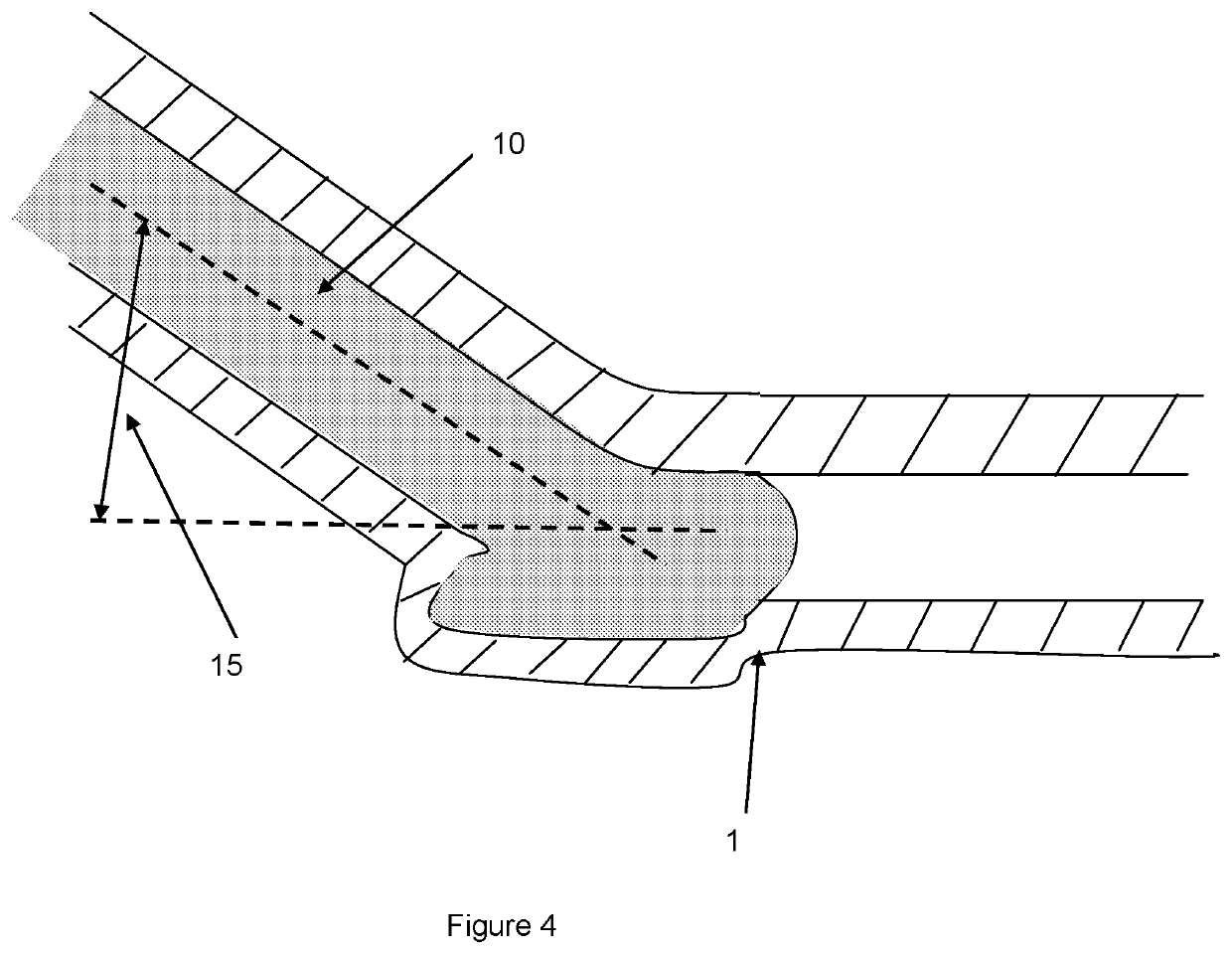Regenerative tissue and natural tissue implants
a natural tissue and implant technology, applied in the field of implants, can solve the problems of post-surgical complications, calcification, material strength and size, immunogenicity, thrombogenicity, etc., and achieve the effect of low thrombogenicity and sufficient strength
- Summary
- Abstract
- Description
- Claims
- Application Information
AI Technical Summary
Benefits of technology
Problems solved by technology
Method used
Image
Examples
example 1
rotocol
Reagents:
[0131]20 mM Hepes; CaCl2), in 20 mM Hepes; fibrinogen; thrombin; 5% pluronic acid; DMEM w / Hepes; DMEM w / FBS; insulin; and ascorbic acid.
Method:
[0132]Coat form (e.g., mandrel; mold; tube; glass plate or rod) with a lubricous substance, e.g., pluronic acid solution.
[0133]If tissue contraction or stabilization is needed, prepare the devices or elements needed to stop or control contraction. These devices or elements may include restrictors or elements that resist or prevent the tissue from contracting, or allow controlled or limited contraction.
[0134]Harvest cells.
[0135]Mix fibrinogen solution (fibrinogen stock in 20 mM Hepes).
[0136]Mix thrombin solution (thrombin stock in DMEM w / Hepes and CaCl2) solution; as used herein, the first medium, or any medium suitable for suspending cells).
[0137]Suspend cells in the first medium formulation without FBS or serum supplement.
[0138]Add cell suspension to fibrinogen solution.
[0139]Add thrombin solution to cell suspension / fibrinoge...
example 2
d Shaping Protocol
[0142]The graft is then fed, grown, and / or shaped as the collagen content increases and the fiber alignment and cross linking takes place. The graft culture media is changed periodically as needed using the second medium (Penstrep optional).
[0143]The cells in the graft are grown until the desired endpoint. In this experiment, the endpoint is determined by both visual observation and / or by product or process testing. Visual observation includes but is not limited to translucence, e.g., the tissue becoming more opaque and / or thicker. Product and process testing includes but is not limited to collagen content; tensile strength or modulus (in one or more directions, e.g., longitudinal or circumferential); suture retention (in one or more directions); histology; shrink temperature; acellular content; and thickness.
[0144]During this growth phase, various other steps may be incorporated into the protocol: mixing, detachment, and contraction.
[0145]If the culture medium nee...
PUM
| Property | Measurement | Unit |
|---|---|---|
| internal diameter | aaaaa | aaaaa |
| size | aaaaa | aaaaa |
| size | aaaaa | aaaaa |
Abstract
Description
Claims
Application Information
 Login to View More
Login to View More - R&D Engineer
- R&D Manager
- IP Professional
- Industry Leading Data Capabilities
- Powerful AI technology
- Patent DNA Extraction
Browse by: Latest US Patents, China's latest patents, Technical Efficacy Thesaurus, Application Domain, Technology Topic, Popular Technical Reports.
© 2024 PatSnap. All rights reserved.Legal|Privacy policy|Modern Slavery Act Transparency Statement|Sitemap|About US| Contact US: help@patsnap.com










